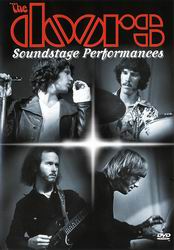The Doors-Soundstage Performances (2002) |
|
The Doors-Soundstage Performances (2002) |
|


|
| BUY IT |
| General | Extras | ||
| Category | Music |
Main Menu Audio Gallery-Photo Biographies-Cast |
|
| Rating |

|
||
| Year Of Production | 2002 | ||
| Running Time | 120:44 | ||
| RSDL / Flipper | RSDL (62:37) | Cast & Crew | |
| Start Up | Menu | ||
| Region Coding | 1,2,3,4,5,6 | Directed By | Stephanie Bennett |
|
Studio
Distributor |
 Warner Vision |
Starring |
Jim Morrison Ray Manzarek John Densmore Robby Kreiger |
| Case | Amaray-Transparent-Secure Clip | ||
| RPI | $31.95 | Music | The Doors |
| Video | Audio | ||
| Pan & Scan/Full Frame | Full Frame |
English Dolby Digital 5.1 (448Kb/s) English Dolby Digital 2.0 (192Kb/s) English dts 5.1 (1536Kb/s) |
|
| Widescreen Aspect Ratio | None | ||
| 16x9 Enhancement | No | ||
| Video Format | 576i (PAL) | ||
| Original Aspect Ratio | 1.33:1 | Miscellaneous | |
| Jacket Pictures | No | ||
| Subtitles | None | Smoking | No |
| Annoying Product Placement | No | ||
| Action In or After Credits | No | ||
†††† Rather than a DVD remastering of one of their classic live shows, The Doors: Soundstage Performances is an actual documentary about one of the most influential and infamous groups of the 1960s-70s. Including extensive interviews with the remaining former band members and associated crew, the documentary uses the few soundstage performances (as opposed to live performances) The Doors ever did as a way to better analyse the band as both collective and individual musicians. This also serves as a way to chart the evolution of their art, as we are given insights into the creative processes behind the music and the various controversies that resulted in the band being banned from live performance.
†††† There are three performances reproduced here: Toronto 1967; Denmark 1968; and New York 1969. Each of these performances is musically stunning, although the really interesting part for me was to hear what those involved with the performances had to say about the projects -- the various anecdotes and recollections, plus the detailed examinations and self-criticism made by the band members towards the end. I'm not going to spoil the viewing, but fans of The Doors should really check this one out. So, too, should those with a keen interest in music history. Moreover, although the music is a little raw and seems a little strange without an audience, some of the versions of tracks such as "Unknown Soldier" and "The End" are nevertheless breathtaking. While definitely a music documentary, not a music video, this one is not merely a piece of marketing.
†††† The video transfer of this DVD varies radically in its quality, from reasonable to unwatchable.
†††† The interviews with the cast, filmed in 2002, are obviously done with a digital camera. The picture has been letterboxed to 1.78:1, non-16x9 enhanced. There is a little low-level noise in these shots, but nothing too garish. The picture sometimes seems a little soft, but I think that has something to do with the NTSC to PAL conversion that the clips have obviously undergone.
†††† The Toronto 1967 show is far from all right. Colours are soft and muted as if having undergone some bleach process. Most noticeable was the persistent low-level noise, but there was also some ghost imaging going on and some telecine wobble which got quite annoying. Moreover, the picture was persistently out of focus and blurry.
†††† The Denmark 1968 show, shot in black and white, is probably best of the lot in terms of picture quality except for the ongoing telecine wobble. Literally, this artefact does not let up with wave after wave of wobble running down the screen. There was also some low-level noise in the background, but nothing too distracting. Shadow detail is pretty bad.
†††† The New York 1969 show is by far the worst. This is, literally, unwatchable. It should be a guide to film-to-video artefacts, not to mention MPEG artefacts. Obviously transferred from an appallingly degraded tape-based source, the colour is all wrong and the picture is disgustingly soft and blurry. Tracking errors scar this performance from beginning to end. At several points, the picture disintegrates entirely, the sound going with it. Most notably, for nearly half a minute between 56:52 and 57:20, the tape seems to jam up, the tracking goes way off, the picture is marred with static, and the sound is like when you put a tape on slow, then speed it up again suddenly, then cut back to slow, then to normal. Amusing, but only for a while. This happens several times after this point, but to a lesser degree. As for low-level noise, letís try high-level noise instead. Plus telecine wobble, ghosting, colour bleed, MPEG macro-blocking, and dot crawl. Shadow detail is non-existent. Remarkably, there is very little aliasing.
†††† In all fairness, those responsible for mastering this DVD are not at fault, and all these problems seem to reside with the master copy.
†††† The dual-layer pause is at 106.12. It is between two tracks, and only minimally disruptive.
| Sharpness | |
| Shadow Detail | |
| Colour | |
| Grain/Pixelization | |
| Film-To-Video Artefacts | |
| Film Artefacts | |
| Overall |
†††† There are three audio tracks on this disc: a 2.0 Dolby Digital Stereo track, a 5.1 Dolby Digital Surround Sound track, and a 5.1 DTS track. I listened to them all.
†††† The 2.0 Stereo track is a rich mix, with a fair register and some meaty bass to get your ears around. This was obviously the original mix, and would have sufficed, although I am not going to argue with any studio that wants to put a DTS track on a DVD.
†††† The 5.1 Dolby Digital track is a little thin, and I have to confess that I preferred the 2.0 Stereo mix. There is very little surround presence, again, and next to no subwoofer use. The bass was okay, but nothing special. Morrisonís voice is still prone to distortion, but thatís the way he screams into the microphone, so we can hardly fault the sound mixer for this.
†††† The 5.1 DTS track is the pick of the bunch. Although only front driven, except for the faintest of assistance from the surrounds, the bass is rich and full, and so is the spread of sound across the treble range. Most notably, the clarity in Morrisonís voice was noticeable, as was the bass guitar and the electric organ work. The subwoofer came into play far more on the DTS track than it did on the 5.1 Dolby Digital track. All in all, far better.
†††† All the tracks had problems with the New York performance where the tape runs off the rails. The same sound glitches are occur on every track.
| Dialogue | |
| Audio Sync | |
| Clicks/Pops/Dropouts | |
| Surround Channel Use | |
| Subwoofer | |
| Overall |
†††† The menus are all 16x9 enhanced, with music by The Doors playing.
†††† A series of black and white / colour stills set out in photo album style depicting shots of the band at work, and promotional photos.
†††† These are a series of static screens with biographical details of the band. Itís pretty minimalist, but better than nothing.
NOTE: To view non-R4 releases, your equipment needs to be multi-zone compatible and usually also NTSC compatible.
†††† Amazon has the running time of this DVD marked at 90 minutes. I cannot confirm this, as nowhere else seems to have any information on this disc. Chances are that Amazon made a mistake and the R1 version is identical to the local release. But, erring on the side of caution, Iím going to give this one to the R4 release.
†††† The Doors: Soundstage Performances is a very good musical documentary about a part of The Doors history that is often overlooked.
†††† The video quality ranges from acceptable to awful.
†††† The audio quality is generally good but with very little surround presence.
†††† The extras are pretty banal, but better than nothing.
| Video | |
| Audio | |
| Extras | |
| Plot | |
| Overall |
| Review Equipment | |
| DVD | Panasonic DVD-RV31A-S, using S-Video output |
| Display | Beko 28" (16x9). This display device is 16x9 capable. |
| Audio Decoder | Built in to amplifier/receiver. |
| Amplification | Marantz SR7000 |
| Speakers | Energy - Front, Rear, Centre & Subwoofer |